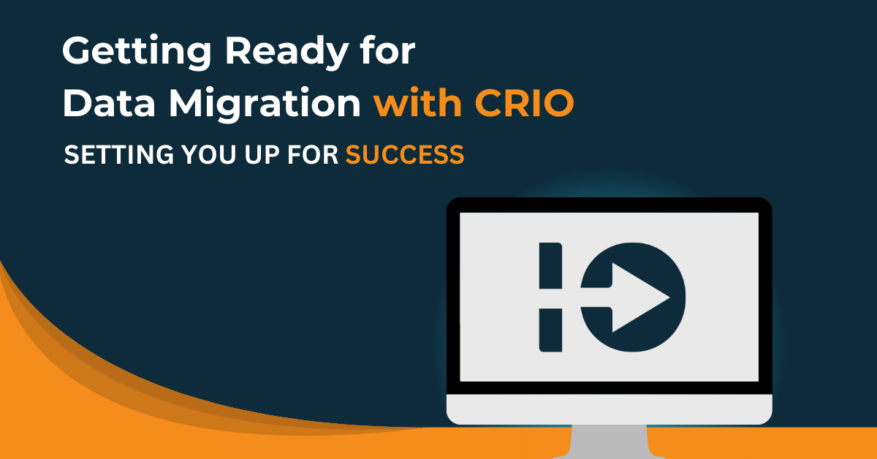The Coming Wave of Electronic Source (eSource) and eRegulatory for Clinical Trial Sites: Survey Insights

See exclusive survey data on what technologies clinical research sites are currently using, how much they’re spending, and why Electronic Source (eSource) and eRegulatory software is poised to break out in the clinical trials industry.
Motivation for eSource and eRegulatory Survey
Clinical Research IO (CRIO) was founded on the belief that we can get life-altering drugs to market faster through the digitization of health care (read about CRIO here). There are already several worthy clinical trial softwares that can have a meaningful impact for research sites and trial sponsors; unfortunately, the landscape of technology offerings is cluttered and disparate, and clinical research sites in particular lag behind the industry in terms of clinical trial software adoption. We set out to discover why.
Methodology of the Survey
In March 2018, CRIO commissioned Insightful Alliance, a market research firm, to administer a 37-question web survey. Managers at roughly 3,000 research sites were solicited, 118 responses were received, and all responses were anonymized to CRIO. Here’s a breakdown of the survey respondents:

Findings And How They Pertain to eSource and eRegulatory For Clinical Trial Sites
1. Research Sites Spend Less on Software than the Rest of the Healthcare Sector

Physician practices are the only type of clinical trial site that reports spending as a percentage of revenue close to what health care providers spend on technology. However, given the relatively low level of adoption of clinical trial software within this segment, it’s unclear if these practices truly invest at this level or are merely reporting their spend as an allocation of their overall EMR budget. Non-physician practices report spending less than the health care sector benchmark, suggesting an opportunity to make further investment.
Why would these sites be reluctant to invest in technology when sponsors, Clinical Research Associates, and research site after customer after customer are all advocating it?
2. Clinical Trial Software Costs Don’t Scale with Revenue

Technology costs are a significantly higher burden for research sites earning less than half a million dollars in annual revenue. This doesn’t have to be the case in today’s age of prevalent Software as a Service (SaaS) offerings. Most SaaS products provide web-based solutions on a subscription basis and at prices that scale with usage.
CRIO’s eSource solution (which is different than EDC), for example, is priced “per patient visit.” In this model, the cost of the software scales proportionally with our customers’ software usage and earned revenue. Our price starts low and increases only if our customers increase their visit volume. Variable pricing models like ours reduce the burden new research sites face with the upfront costs of investing in older technologies. We hope that, along with easier implementations, the lower upfront cost of industry-specific software will encourage adoption, which leads us to our next finding…
3. Clinical Trial Software Adoption Is Less Than 40% (Finance Leads The Way)

4. However, Many Clinical Research Professionals Using Paper-Based Regulatory and Source Solutions WANT to Go Electronic…

5. Moreover, Most Clinical Research Professionals EXPECT Sites To Adopt Clinical Trial Software Over The Next 5 Years

Curious why most clinical sites are predicting software adoption to increase significantly? You can read CRIO CEO Raymond Nomizu’s take in his blog post, “eSource: Why Now?“.
Curious what eSource actually looks like? Learn more about CRIO’s eSource here.
Conclusions From Clinical Trial Software Survey For Sites: What’s Next?
According to respondents, better integration and usability
A major adoption issue is that research sites are targeted to implement eSource and eRegulatory, but if a sponsor/CRO has their own system, sites will have to learn multiple…. Sites don’t want to invest in platforms that lack usability across all studies.
Would like to see further work by sponsors to find centralized software and electronic equipment sources so that there are not multiple machines, tablets, etc. of the same kind used specifically for different studies.
Integration of systems is just beginning, but I believe it to be the wave of the future.
Consideration needs to be given to the end user…the site coordinator.
We agree: Integration of Clinical Trial Software is Key
We built CRIO’s electronic source, CTMS, and eRegulatory software with one end-user in mind: clinical research sites. Variable pricing, an intuitive user interface, and constant upgrades are attractive features of any software, but we try to go further to address needs specific to clinical research. Unlike sponsor-provided systems, the same CRIO system can be used in any study. Sites have only one system to worry about, and monitors too can use just one CRIO account across multiple studies and sites. These are just a few examples of how we’re trying to answer the calls for more integrated and usable technology.
We hope that the survey respondents are correct in their predictions that eRegulatory, CTMS, eConsent, and eSource adoption will all increase in the near future. With the right system, we firmly believe that fully trials powered by clinical trial software can drastically accelerate and improve clinical research.






